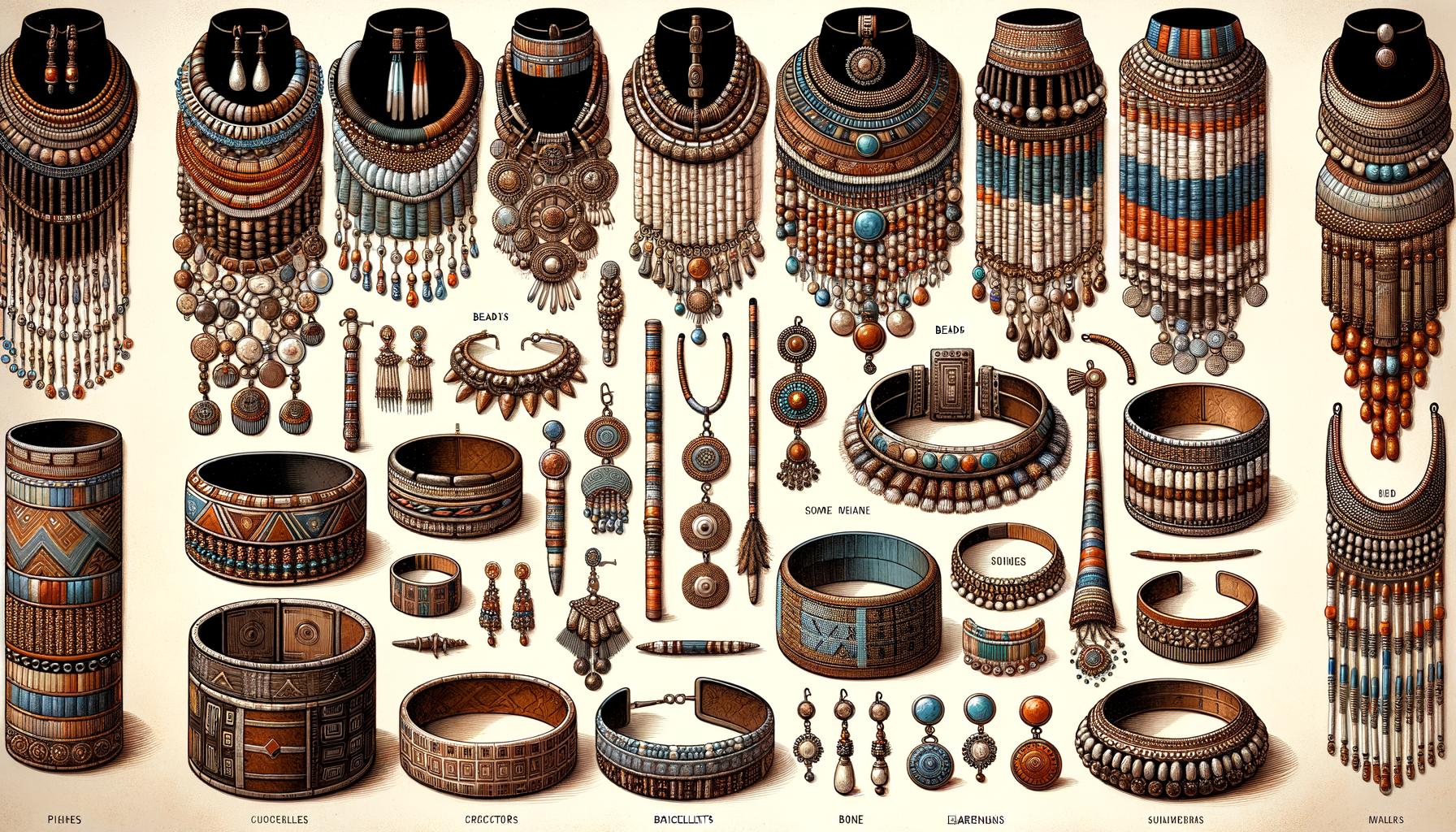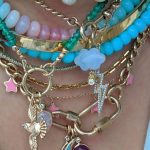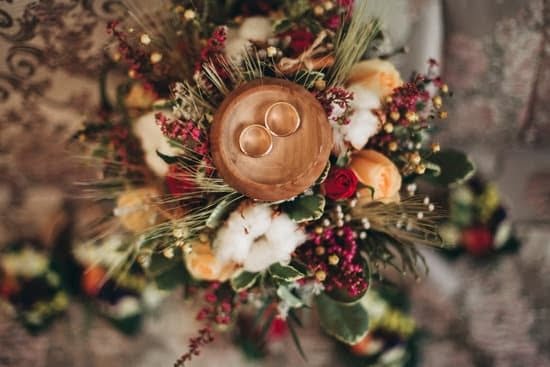African tribal jewelry has long fascinated individuals from around the globe, not just for its striking beauty but also for its profound cultural significance. African tribal jewelry: meanings and traditions extend far beyond mere decoration or adornment; they serve as powerful symbols that communicate a range of messages-from social status and spiritual beliefs to historical narratives and artistic expressions.
This blog post aims to delve deep into the rich tapestry of African tribal jewelry, unraveling its intricate details and uncovering the stories embedded within each piece.
The importance of jewelry in African culture cannot be overstated. Traditionally, these pieces are cherished artifacts steeped in meaning, often passed down through generations as heirlooms. They are more than objects of aesthetic value; they serve functional roles during rites of passage, ceremonies, and everyday life. Whether used to accompany a bride on her wedding day or worn by warriors as emblems of valor and protection, these items harbor an intimacy with their wearers that transcends time.
In this comprehensive exploration, we will navigate through the historical background of African tribal jewelry while shedding light on the materials and craftsmanship that make each piece unique. We’ll decipher the symbolism and meanings behind various adornments, understand their ceremonial uses, analyze how they signify status and identity within tribes, observe their influence on modern fashion trends, offer tips for buying authentic pieces ethically, and discuss efforts being made to preserve these timeless practices.
Get ready to immerse yourself in the captivating world of African tribal jewelry-its stories await to be uncovered.
Historical Background of African Tribal Jewelry
The origins of African tribal jewelry date back thousands of years, with archaeologists uncovering ancient beads and adornments that suggest a rich history deeply intertwined with the continent’s cultures and traditions. Early humans in Africa created ornaments for functional purposes, including protection and utility, but over time these pieces evolved into complex symbols of status, identity, and spirituality.
Findings from archaeological sites such as Igbo Ukwu in Nigeria reveal intricate beadwork and metalwork dating back to the 9th century A.D. highlighting an advanced level of craftsmanship.
Various regions across Africa developed unique jewelry-making techniques influenced by their local resources and interactions with other cultures through trade. For instance, West African tribes were known for their mastery in goldsmithing and created some of the most exquisite pieces using locally sourced gold. In Eastern Africa, the prominence of trade routes connected African craftspeople with merchants from Arabia, Persia, and India.
These interactions facilitated the exchange of materials like glass beads and introduced new techniques which were then adapted into traditional practices. This blending resulted in a progressive evolution where modern artistic influences began to reflect in tribal craftsmanship without detracting from its indigenous essence.
Trade also brought about European colonization which had profound impacts on African jewelry traditions. Colonial powers often imposed their aesthetic values which led to both the suppression and transformation of native arts.
Some traditional practices were lost due to cultural impositions; however, African artisans often cleverly merged colonial materials like imported metals with traditional designs to preserve their heritage in covert ways. The resilient spirit of these artisans ensured that despite external influences, the intrinsic value tied to african tribal jewelry: meanings and traditions remained potent-a testament to a legacy that thrived through adaptation while retaining its core identity.
Materials and Craftsmanship
African tribal jewelry is renowned for its rich diversity in materials, each offering unique insights into the community’s environment, resources, and ingenuity. Common materials used include beads made from glass or clay, metals like gold and copper, bones, ivory, and a variety of shells. The use of these diverse elements is not only a demonstration of resourcefulness but also a reflection of the deep-seated cultural values associated with these materials.
Common Materials: A Reflection of Environment
Beads are perhaps one of the most iconic components of African tribal jewelry. Glass beads often signify trade relationships, as they were introduced by European traders and became invaluable in bartering systems.
Metalwork involves intricate craftsmanship; regions rich in minerals used locally sourced metals to create stunning pieces that denote status and wealth within the tribe. Bones and ivory sourced from animals are commonly used among tribes where hunting is a significant part of life, symbolizing a connection to nature and ancestors.
Traditional Crafting Techniques: Generational Skills
The techniques deployed in creating African tribal jewelry vary greatly between tribes but share common threads in their meticulous attention to detail and symbolic intentions. Jewelry crafting often involves traditional tools such as hand-carved molds for metal casting or simple needle-like devices for bead stringing.
Artisans pass down these skills through generations, ensuring that each piece carries both historical significance and contemporary relevance. The handmade aspect is crucial because it preserves age-old methods that machinery simply cannot replicate.
The Significance of Handcrafted Jewelry
Handcrafted African tribal jewelry does more than adorn the body; it serves as a tactile legend that tells stories, conveys prayers, or asserts social roles within communities. Crafted painstakingly over days or even weeks, these pieces embody the spirit and identity of their creators while echoing the meanings deeply rooted in tribal traditions. This handcrafted essence renders each item unique-a bespoke representation not just of personal artistry but of collective cultural heritage.
By exploring african tribal jewelry: meanings and traditions through the lens of Materials and Craftsmanship, we gain an enriched understanding of how these elements shape societal structures while celebrating individual artisanship.
Symbolism and Meanings
The symbolism and meanings embedded in African tribal jewelry are profound, encompassing a wide variety of interpretations that differ greatly across tribes and regions. Each piece is often imbued with spiritual and cultural significance that transcends its aesthetic allure.
For instance, the Maasai tribe uses vibrant beadwork to convey messages of social status, marital status, age, and even specific virtues such as courage or kindness. The intricate bead patterns and colors are not just decorative but serve as a visual language understood within the community.
Different symbols hold varied meanings depending on the tribe. In West Africa, for example, the Akan people use gold weights shaped into various symbols to convey proverbs or historical events. These gold weights might feature images of animals such as crocodiles or serpents, each bearing unique connotations-crocodiles might symbolize adaptability due to their ability to navigate land and water. Such pieces are crafted with extensive knowledge passed down through generations, ensuring that their deeper meanings remain intact.
Another notable example is the Tuareg tribe’s cross amulets made from silver. These crosses are believed to offer protection against evil spirits while also guiding travelers through the harsh Sahara Desert. Similarly, Xhosa women wear elaborate beaded necklaces during ceremonial rites to signify fertility and prosperity; these are often handed down from mother to daughter, symbolizing continuity within the family lineage.
Here is a list of how different materials used can have particular symbolic meanings:
- Beads: Often represent fertility, wealth, or social status.
- Metals: Such as gold or silver can symbolize purity or high rank.
- Bones: Might be linked to ancestral reverence or spiritual strength.
- Shells: Conch shells in some cultures represent communication with deities.
Thus, African tribal jewelry serves as much more than adornment; it embodies stories, beliefs, values, and identities deeply rooted in tradition. Understanding these intricate layers adds an enriching dimension to appreciating African tribal jewelry: meanings and traditions interwoven into everyday life and special ceremonies alike.
Ceremonial and Ritual Uses
African tribal jewelry holds a significant place in various ceremonial and ritualistic contexts, often serving as more than mere adornments. For numerous tribes, these pieces are intrinsically linked to life’s most important milestones and rites of passage.
During weddings, for instance, jewelry is used not only to embellish the bride and groom but also to signify their unity and commitment. Elaborate beaded necklaces, intricate metal bracelets, and specially crafted headpieces may all be part of the ceremonial attire, each piece imbued with specific meanings-ranging from fertility wishes to symbols of prosperity and good fortune.
Rites of passage represent another crucial context where african tribal jewelry: meanings and traditions come into play prominently. Whether marking the transition from childhood to adulthood or celebrating an individual’s achievements within the tribe, specific items of jewelry can serve as tangible markers of status change.
Among the Maasai tribe in Kenya and Tanzania, for example, warriors earn distinct beadwork patterns on their adornments that signal their accomplishments and readiness for responsibilities. Similarly, initiation ceremonies among some West African communities involve intricate body decorations made from cowrie shells or carved wooden pieces designed to invoke ancestral protection.
Ritualistic practices also frequently incorporate symbolic jewelry aimed at invoking divine blessings or warding off evil spirits. In many cultures across Africa, amulets made from materials like bronze or animal bones serve protective purposes during spiritual rituals.
These charms are believed to offer shields against misfortune while enhancing the wearer’s connection with both ancestors and deities. The Yoruba people’s use of ileke (special beads) and other sacred items during religious ceremonies vividly illustrates how deeply embedded these traditions are in daily life; such artifacts not only hold aesthetic value but also embody layers of cultural meaning passed down through generations.
Status and Identity
In many African tribes, jewelry is more than decorative; it serves as a marker of one’s social standing within the community. Elaborate pieces, often adorned with precious materials such as gold or rare beads, are typically worn by individuals of higher status.
For example, among the Akan people of Ghana, chiefs and royalty wear opulent gold jewelry to signify their power and position. These pieces are not merely for display but serve as public declarations of wealth and influence, underlined by intricate designs that may take artisans months to complete.
Furthermore, gender roles play a crucial part in the creation and wearing of African tribal jewelry. Women often wear specific types of jewelry that indicate their role within society, such as necklaces or bracelets signifying marital status or motherhood. Conversely, men might don items associated with warrior status or leadership responsibilities.
Among the Maasai tribe in Kenya and Tanzania, both men and women wear beaded jewelry that reflects their age group and social role; however, the styles and colors differ significantly between genders. This differentiation helps to maintain clear societal structures and rites of passage within the community.
Ethnic identity is another significant aspect expressed through traditional jewelry. In regions where numerous tribes coexist, each group can be distinguished by its unique adornments.
The Fulani people are known for their large gold earrings called “kwottenai kanye,” while the Himba women in Namibia are recognized by their elaborate shell necklaces and copper anklets. These distinct forms of african tribal jewelry: meanings and traditions help preserve cultural heritage amidst growing global influences and ensure that members from different ethnic backgrounds can identify each other easily within a multicultural setting.
Modern Influence and Adaptation
In today’s fashion world, African tribal jewelry has emerged as a significant influence on contemporary design. Modern designers often draw inspiration from traditional motifs, materials, and crafting techniques prevalent in various African cultures.
This integration not only highlights the aesthetic richness of African tribal jewelry but also raises awareness about its deep-rooted meanings and traditions. Frequently seen on runways and in high-end brand collections, elements like bold beadwork, intricate metal designs, and natural materials such as bones and shells create a fusion that pays homage to ancestral heritage while appealing to current fashion trends.
The influence of African tribal jewelry extends beyond aesthetics to impact global jewelry trends. Ethnic beads, for example, are highly sought after for their vibrant colors and unique patterns. These beads often hold specific cultural significances:
These influences have permeated mainstream fashion, leading to increased demand for handmade pieces that embody the essence of traditional African artistry.
Modern artisans are playing a pivotal role in retaining the authenticity of african tribal jewelry: meanings and traditions whilst adapting it for contemporary tastes. Collaborations between local craftsmen and international designers help preserve these time-honored techniques. For instance:
1. Local Artisans: Continue practices like bead weaving by hand.
2. International Designers: Incorporate these handcrafted items into modern accessories.
By doing so, they ensure that while the jewelry adapts to new styles, it retains its original cultural essence. This harmonious blend of old meets new not only keeps ancestral craft alive but also brings it into everyday wearability across the globe.
Buying and Collecting African Tribal Jewelry
When it comes to buying and collecting African tribal jewelry, there are several key factors that enthusiasts should consider to ensure authenticity. First and foremost, seeking out reputable sellers who specialize in traditional African artifacts is crucial.
These sellers often have the knowledge and experience needed to distinguish genuine pieces from mass-produced imitations. Additionally, visiting local marketplaces in Africa or recognized international exhibitions can offer collectors firsthand insight into the rich heritage of african tribal jewelry: meanings and traditions associated with these unique items.
Ethical considerations also play a significant role in the acquisition process. Supporting local artisans through fair trade purchases not only ensures that you are receiving genuine handcrafted items but also contributes to the sustainability of traditional craft practices.
By opting for ethically sourced jewelry, collectors help preserve cultural heritage while providing much-needed financial support to communities that rely on their craftsmanship as a primary source of income. Furthermore, many organizations advocate for ethical sourcing practices, making it easier for buyers to make informed choices.
Popular marketplaces and exhibitions around the world serve as excellent venues for discovering a diverse range of African tribal jewelry. For example, exhibitions such as New York’s Tribal Art Show and Paris’ Parcours des Mondes offer curated collections that provide valuable context regarding the origins, usage, and significance of each piece on display.
Online platforms like Etsy and dedicated artisan websites also provide access to various selections while allowing buyers to connect directly with creators. By exploring these avenues, collectors can better appreciate the symbolism imbued within each piece and understand its cultural context more deeply.
| Buying Tip | Description |
|---|---|
| Seek Reputable Sellers | Choose vendors specializing in traditional African artifacts. |
| Support Local Artisans | Ensure purchases contribute positively by supporting fair trade. |
| Visit Popular Marketplaces | Explore global exhibitions like Tribal Art Show or online platforms. |
Preservation and Future of African Tribal Jewelry
African tribal jewelry is intrinsically tied to cultural identity, traditions, and heritage. However, the preservation of these traditional practices faces several challenges. One significant issue is the influence of modernity and globalization, which often leads to a decline in interest among younger generations in learning and continuing indigenous jewelry-making techniques.
Efforts by local communities and organizations are vital to ensuring that these rich traditions do not fade into obscurity. Numerous initiatives now provide training programs aimed at younger members of the tribes, encouraging them to take up the mantle of their ancestors’ craftsmanship.
Organizations such as the African Heritage Trust have been increasingly active in preserving these ancient arts. They collaborate with tribal leaders to document traditional techniques and patterns used in creating african tribal jewelry: meanings and traditions.
Furthermore, they organize exhibitions and workshops that serve both educational purposes and help promote appreciation for this cultural heritage within broader audiences. By involving international partners and creating platforms where artisans can showcase their work globally, such efforts significantly contribute toward sustaining these artistic practices.
Another promising strategy for preserving African tribal jewelry lies in promoting its value through tourism and globally accessible markets. Ethical considerations are paramount here; it is essential that artisans receive fair compensation and recognition for their work. Online platforms such as Etsy or dedicated marketplaces like Novica offer ways for global consumers to purchase authentic pieces directly from African artisans, thus ensuring economic benefits flow back into these communities.
| Challenge | Initiative |
|---|---|
| Modernity vs Tradition | Training Programs for Youth |
| Global Market Reach | Online Marketplaces (Etsy, Novica) |
| Lack of Documentation | African Heritage Trust Collaborations |
Conclusion
African tribal jewelry is not merely an adornment but a profound expression of the continent’s rich heritage and cultural identity. As we have explored through this article, these intricate pieces hold deep meanings and traditions, reflecting the beliefs, rites, and societal structures of diverse African tribes. From their historical origins to modern-day adaptations, African tribal jewelry serves as a living testament to the ingenuity, artistry, and spiritual depth of its creators.
The symbolism imbued in each piece can vary greatly from one tribe to another but often conveys universally significant themes such as fertility, protection, and social status. These pieces are more than just decorative; they are vital components of ceremonies and rites of passage that mark key life events within these communities. For instance, in marriages or coming-of-age ceremonies, specific items of jewelry are essential for their symbolic roles in ensuring prosperity and safeguarding against evil spirits.
In today’s world, African tribal jewelry continues to influence contemporary fashion while providing a livelihood for artisans who preserve these age-old techniques. Modern designers frequently draw inspiration from these traditional pieces, blending old-world craftsmanship with new styles to create unique expressions that honor their origins.
As admirers and collectors of this craft, it is imperative that we make ethical choices by supporting local artisans and respecting the cultural significance embedded in each creation. By doing so, we not only acquire stunning jewelry but also contribute to the preservation of african tribal jewelry: meanings and traditions for future generations.
Through recognizing the emotional depth and cultural importance behind African tribal jewelry, we appreciate it not just as physical art but as a vessel carrying stories from generation to generation. Let us continue to learn about and support this incredible form of artistic expression by delving deeper into its history and encouraging fair trade practices that sustain these vibrant communities.
In embracing both tradition and innovation within this field, we ensure that the true essence of African tribal jewelry endures for years to come.
Frequently Asked Questions
What Does African Jewelry Symbolize?
African jewelry serves as a powerful symbol of cultural identity, social status, and personal expression within various communities across the continent. Crafted from materials such as beads, metals, and stones, these pieces are not merely decorative but often carry significant meaning.
They can denote the wearer’s position in society, marital status, or even their spiritual beliefs. In many cultures, specific designs and materials are used to convey messages about the wearer’s heritage and history.
What Is the Cultural Jewelry in Africa?
Cultural jewelry in Africa is richly diverse and deeply intertwined with the traditions and customs of individual ethnic groups. Examples include Maasai beadwork from Kenya and Tanzania, which is known for its intricate patterns and bright colors that are often used to signify different age sets or social roles.
Additionally, gold jewelry from Ghana’s Ashanti tribe showcases elaborate craftsmanship that reflects wealth and power. Each piece tells a story about its origin community’s artistic sensibilities and values.
What Do African Wrist Beads Mean?
African wrist beads are imbued with meanings that vary widely depending on the region, culture, and context in which they are worn. For some West African cultures like the Yoruba people of Nigeria, wrist beads can signify royalty or high social rank when adorned with precious materials such as gold or coral.
In other contexts, they might be used for healing purposes or protection against negative energies through specific spiritual practices. These small yet significant adornments encapsulate a blend of aesthetic beauty and profound cultural significance.

Welcome to my jewelry blog! My name is Sarah and I am the owner of this blog.
I love making jewelry and sharing my creations with others.
So whether you’re someone who loves wearing jewelry yourself or simply enjoys learning about it, be sure to check out my blog for insightful posts on everything related to this exciting topic!





